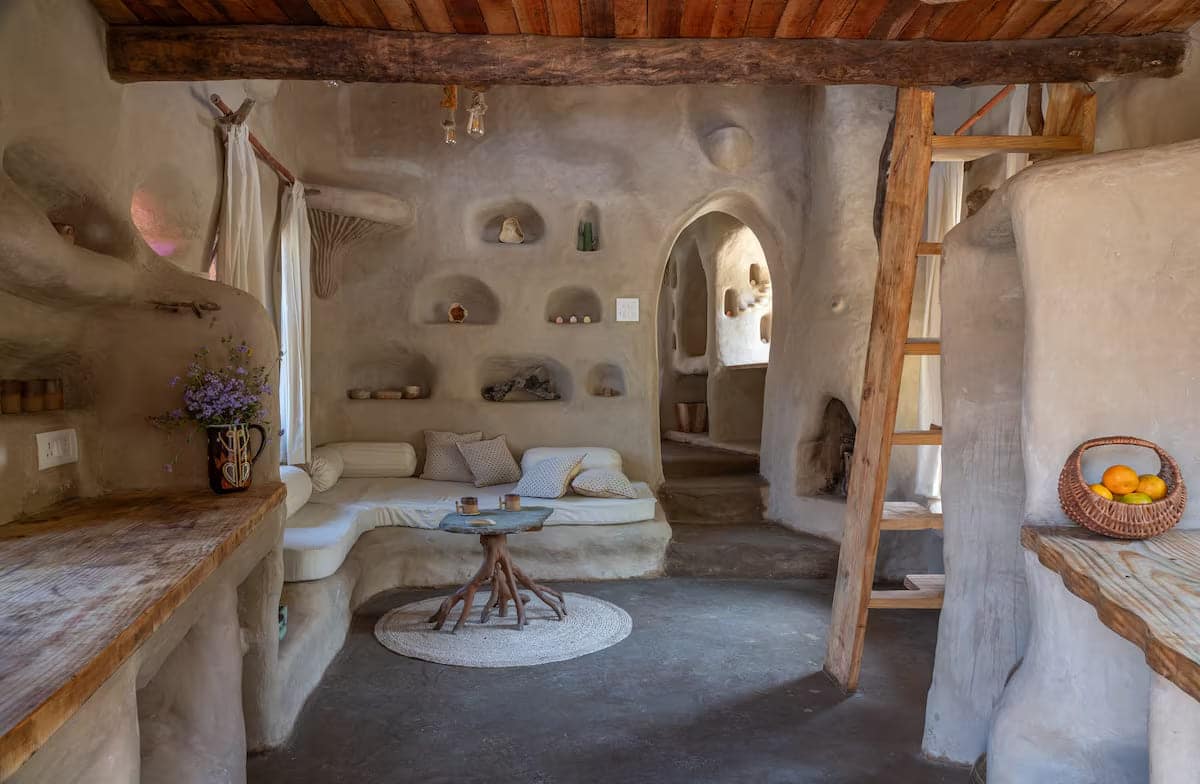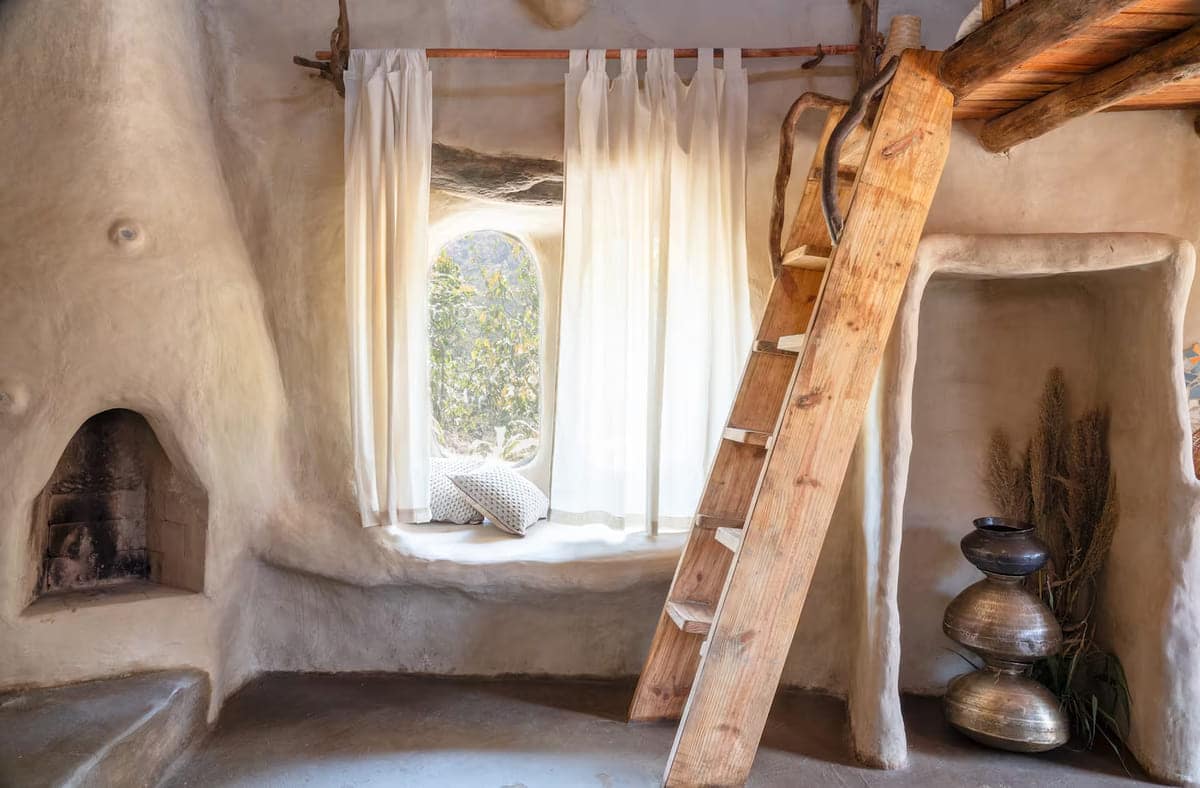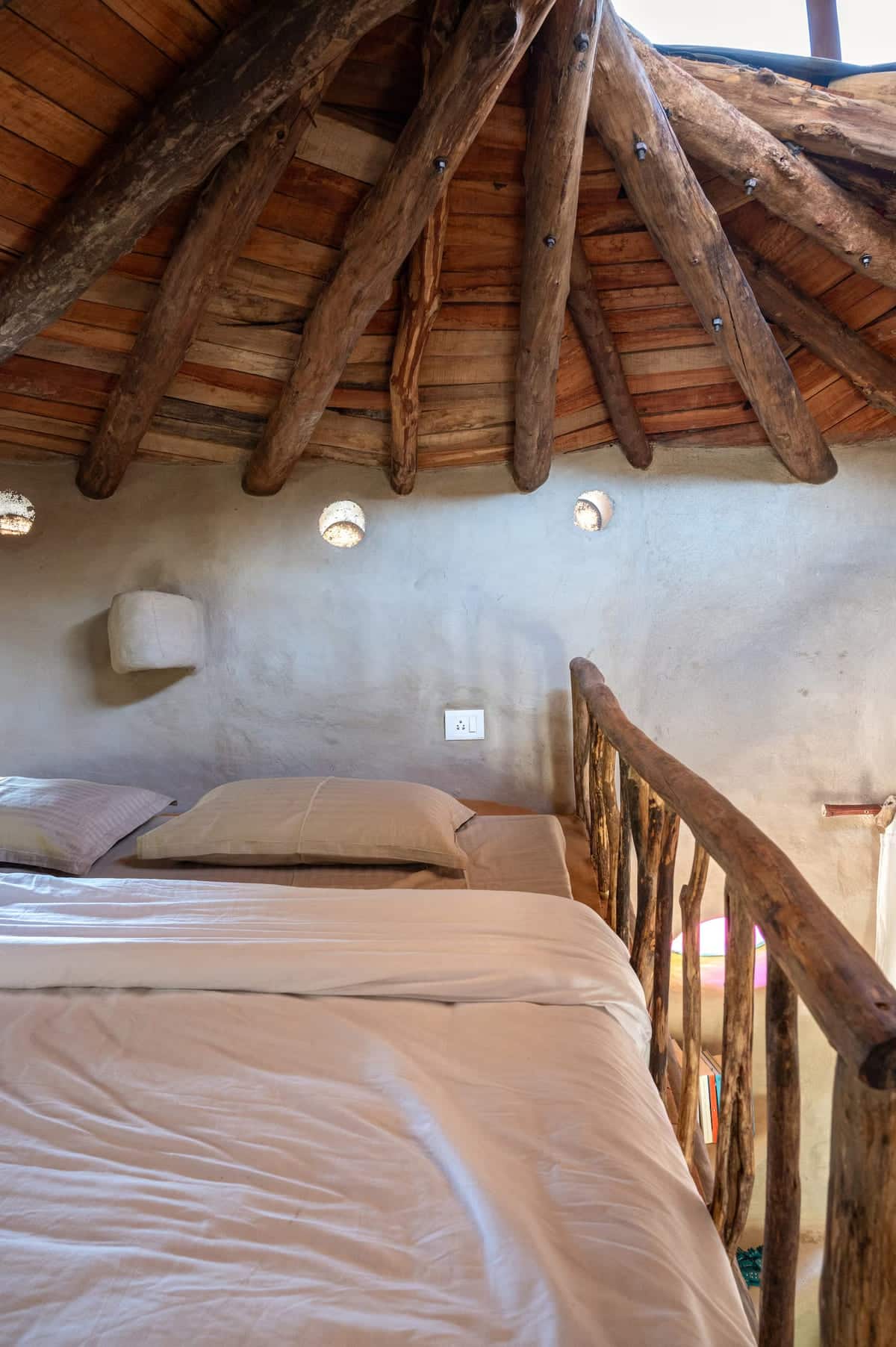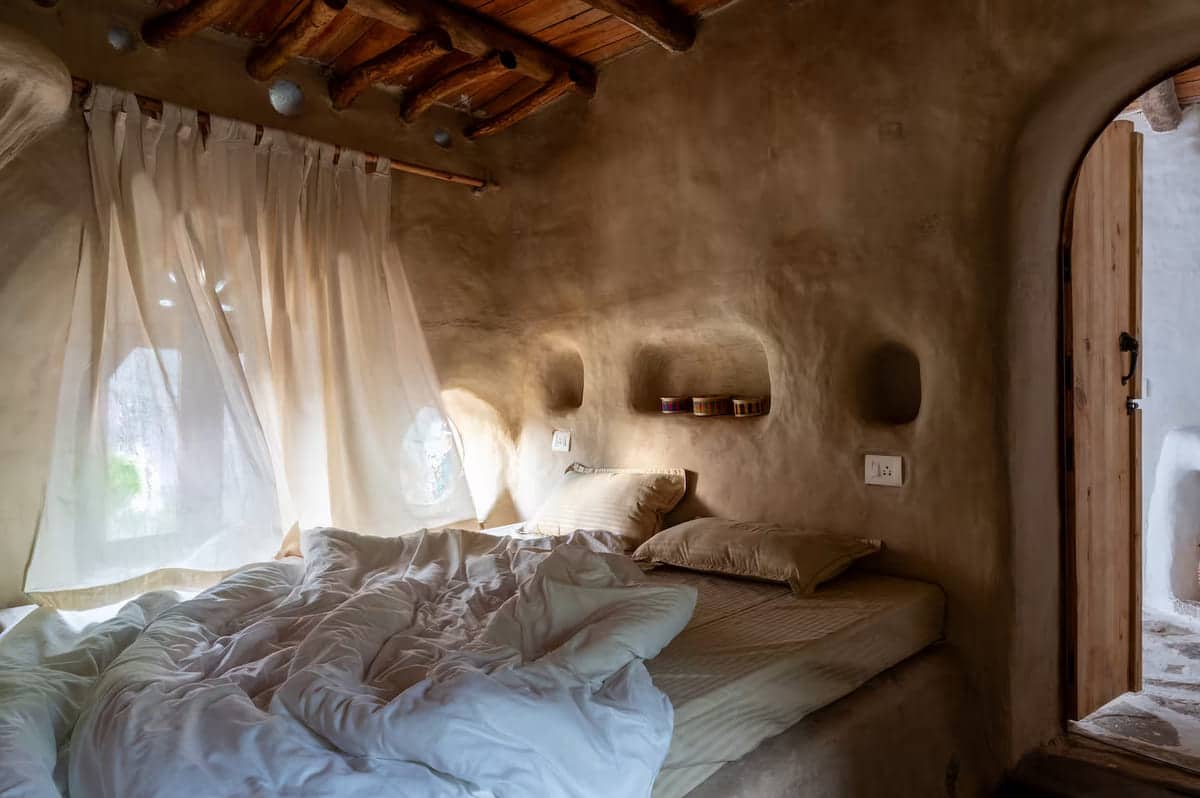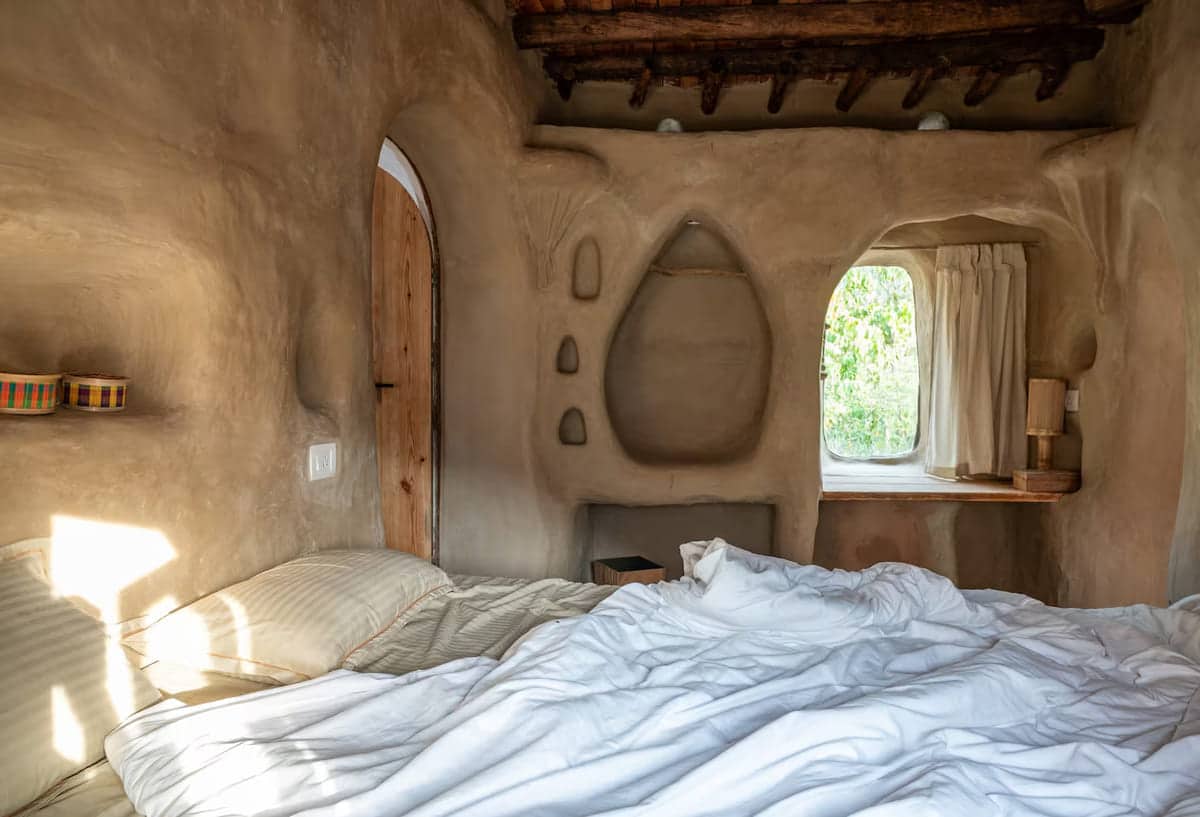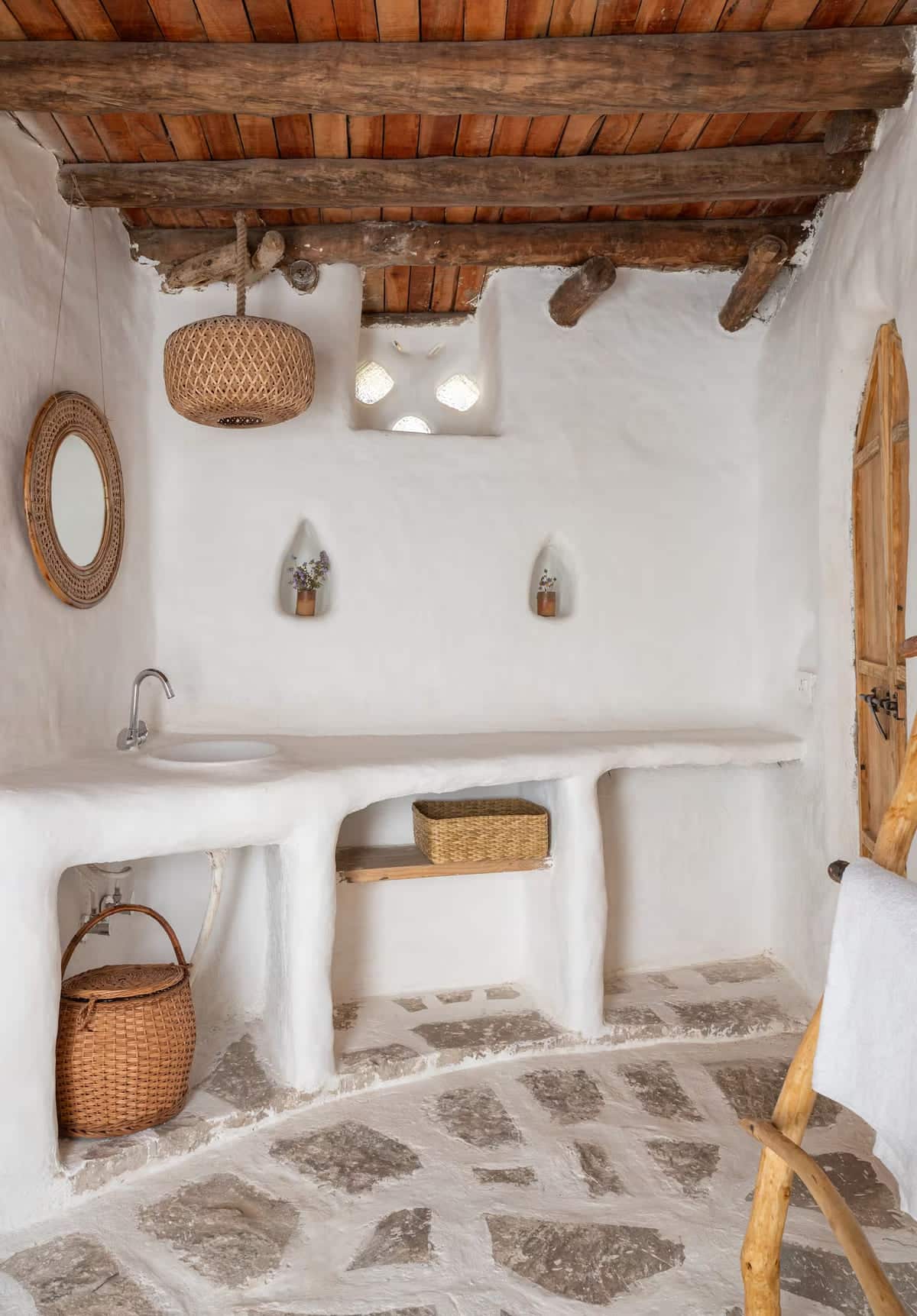
Self-described architects-turned-builders and artists Raghav and Ansh from Tiny Farm Lab wanted to create functional, enduring, and beautiful spaces. They also wanted to celebrate and highlight climate resilience, bioregional materials, craftsmanship, and community. Their resultant 200-square-metre Tiny Farm Fort in Rishikesh, Uttarakhand, India, epitomizes those goals.
The Tiny Farm Fort is hidden in a remote mountain sal forest, perched on a hill overlooking the River Ganges. Every detail from the ground up has been sculpted by hand, telling the stories of over 90 people from at least 18 countries.
The structure is two kilometers from the last motorable point, meaning it’s off-grid and encompassed by nature. Surprisingly, this makes it a rarity. Uttarakhand is among the fastest-growing states, with vast areas now urbanized and concrete-laden. Traditional building materials like wood, bamboo, earth, and lime are now few and far between.
Construction
Raghav and Ansh’s Tiny Farm Fort is no traditional tiny home with modern building materials. It boasts earthen plastered cob walls, a reciprocal frame living roof featuring eucalyptus wooden beams, and a stone arched gateway. It also sits on a dry stone foundation. Nearly all the natural materials used in its construction have been sourced locally and salvaged from old homes, including windows and slate table tops.
The cob walls are perhaps among the most standout features of this tiny house. The 18-inch-thick load-bearing cob walls consist of a mixture of water, straw, clay soil, and sand. The community in the surrounding area created the cob mixture by stomping on it while listening to and enjoying music from around the world.
The cob mixture is plastered with a mix of sand, clay, lime, and even horse poop. For water resistance, the bathroom has a tadelakt plaster, a type of natural lime-based plaster originating in Morocco. Completing the picture are the earthen floors. These have been sealed with beeswax and linseed oil.
Stay in the Tiny Farm Fort
You don’t have to admire the Tiny Farm Fort in Rishikesh from afar—this charming retreat is available to rent on Airbnb. Just nine kilometers from the city, it offers a unique opportunity to immerse yourself in nature without straying too far from Rishikesh’s energy.
To access the Tiny Farm Fort, you’ll need to hike 1.5 kilometers through a forest with your belongings in a backpack. The property is not accessible by car. Upon your arrival, you’ll be able to enjoy the spectacular views from this property, including the emerald-green waters of the Ganges at the front of the tiny home and the entire valley at the back.

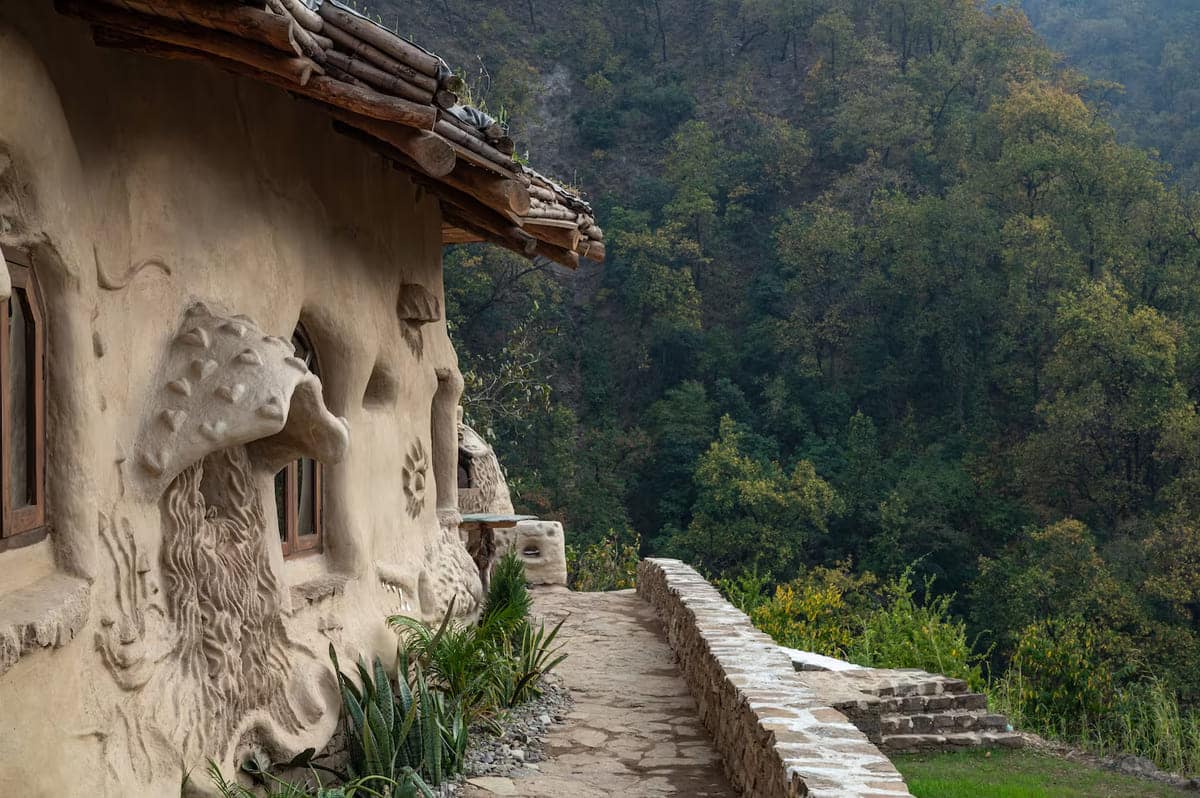
It’s also hard not to be impressed with the organic curves of the structure and the muted colours that make you feel soothed and comfortable.
Instead, you can choose to sleep in the cave bed, which is suitable for up to two people. There is also a loft bed accessible by a handcrafted ladder.
It’s not every day you get to sleep in a cob house made with straw, lime, and a little bit of horse poop—but that’s exactly what makes the Tiny Farm Fort so unforgettable. Equal parts fairy tale and eco-friendly engineering, it’s the kind of place that makes you rethink what “home” can be. Just don’t forget your hiking shoes—and maybe a sense of adventure.



